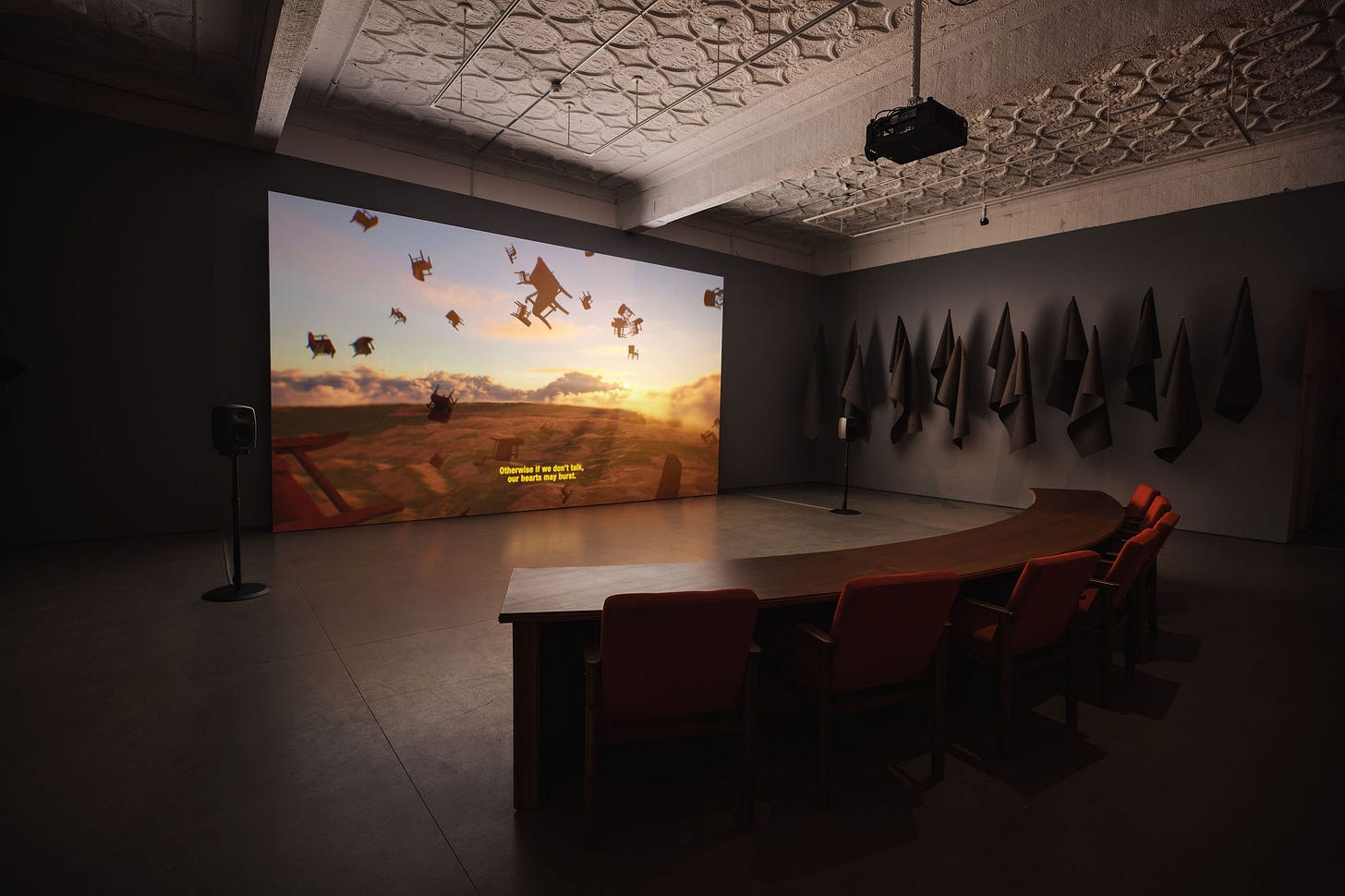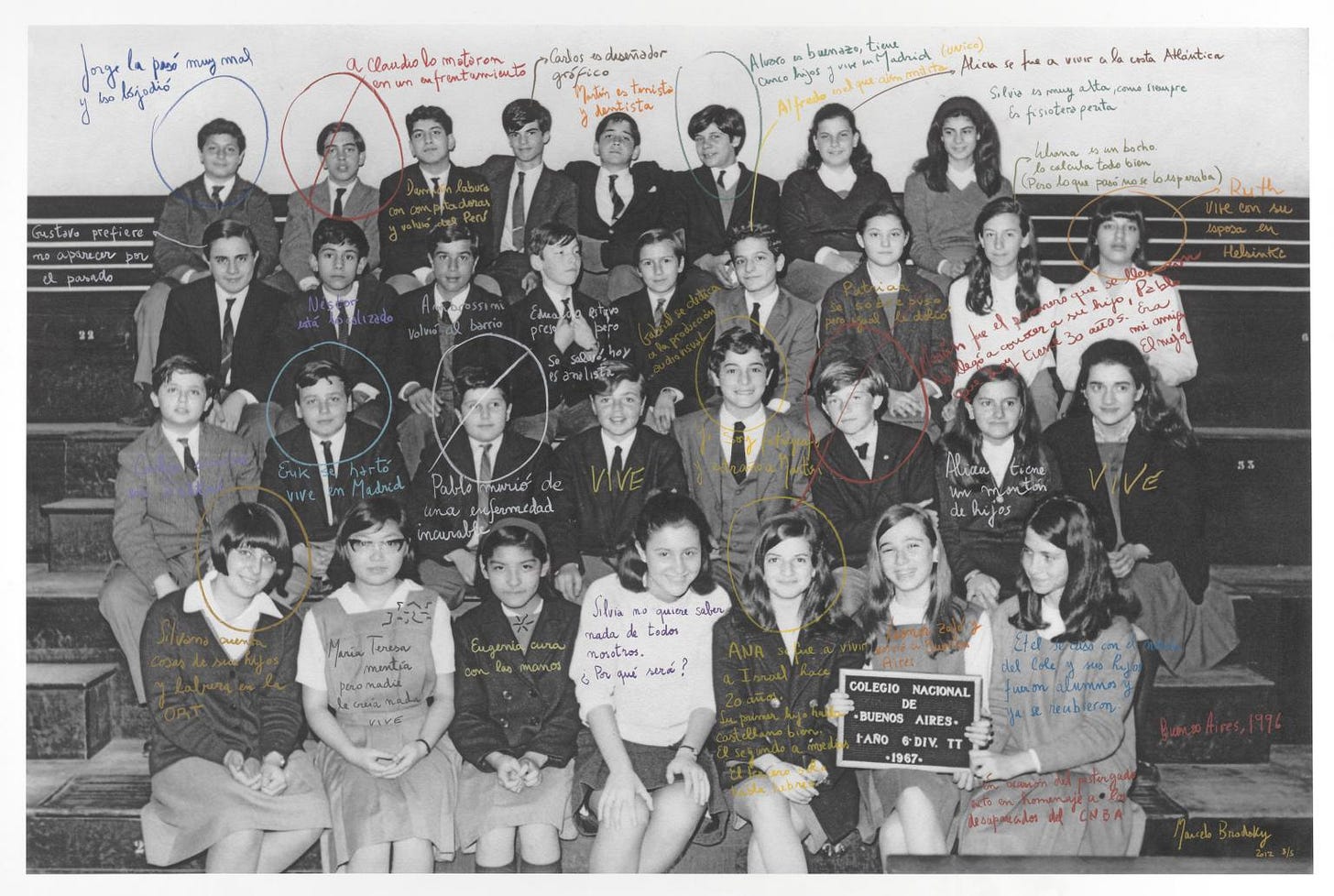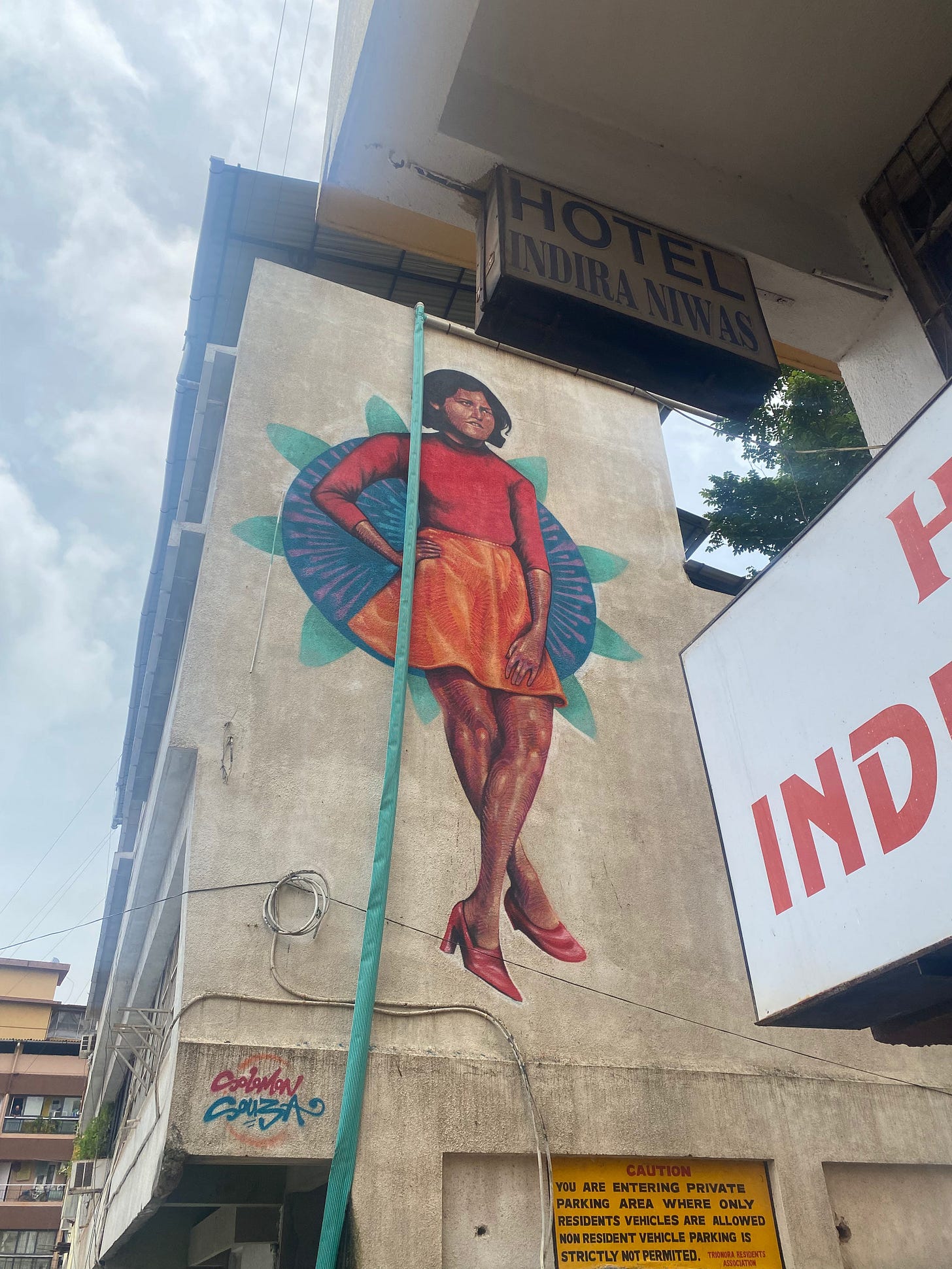An Impossible Address
But we keep making it.
I.

One of the most striking images from Suneil Sanzgiri’s short film, An Impossible Address, is the free-falling of the camera alongside hundreds of red chairs through the open sky. While their fabrics disintegrate on screen, you check the stability of the same red chair you’re seated in, parked before a curved panel desk in a flag-lined room, reminiscent of the UN or some international conference. The furniture smells stale and unused. As the film unfolds, you connect the image of free fall with political prisoners thrown from planes, populations flattened under the guise of self-defence, while assemblies in red chairs impotently denounce the atrocities.
The film intertwines the story of one Angolan revolutionary, Sita Valles, with the wider struggles for independence from colonial rule across Asia and Africa following WWII. Born to parents who migrated from Portuguese-ruled Goa to Angola, she was a dedicated figure in the fight for Angolan independence in 1975. Once realized, her struggle continued against the alleged corruption of the new Angolan leadership. This revolutionary effort, which culminated in a failed coup, resulted in the government’s execution and disappearance of anywhere between 12,000 and 80,000 political targets, including Sita.
The astounding space between 12,000 and 80,000, each integer containing a story like Sita’s, is the pain and the inspiration at the heart of this project. Its title could be read in three ways. One: an address to Sita, impossible because she can’t hear it. Two: an address to the lives lost, impossible because their bodies are missing, their deaths unacknowledged. Three: an address at a conference seeking to rectify or intervene, impossible because a bureaucratic delegation feels utterly toothless in the face of a state willing to commit 12,000 - 80,000 untried executions.
Of course, the transmission of these stories is never as fruitless as it seems. The impossibility of the address is rooted in liberation being a never-ending project; suppression always finds ways to reinvent itself. However upsetting a story, its transmission is a marker of hope. I recently watched Argentina, 1985, which follows the Trial of the Juntas, a remarkable story in which a civilian court successfully prosecutes the former dictatorial government for war crimes, relying on hundreds of stories and testimonials from citizens. Sangziri’s film references The Bandung Conference of 1955, an influential meeting of 29 Asian and African countries who came together, despite their vast differences, in the interest of prevailing over their colonial past. Both efforts with consequential outcomes, rooted in an exchange of stories that surely felt hopeless at the outset.
Despite the impossibility of the address, we keep making it.
II.
Two days ago a BJP leader in my father’s small village
was filmed screaming anti-Muslim chants to a large crowd
Hindu mobs attacked worshipers at a mosque in the city named after Vasco da Gama
The family WhatsApp grows worse by the day
- Sanzgiri’s notes to Sita Valles (the BJP is India’s current government, led by Narendra Modi).
I have been thinking about how nationalistic societies are prone to political manipulation yet, also, how nationalism is bolstered by political threats. A scary feedback loop that we see playing out in real time.
My grandparents and their generation exhibit a level of Indian nationalism that I, in my Canadian-ness, have always found distasteful. In most instances it is harmless. The Big Bang started with an Om, my grandpa used to say. But there is the not-so-harmless stuff. The casual distrust of Pakistanis and, by extension, Muslims. An indulgence of Modi’s pandering to nationalist sentiment and anti-Pakistan rhetoric. I try to be generous; my home was not partitioned to Pakistan after British rule. Also, given the wave of Canadian nationalism I embraced from a few Trump jabs and irritating tariffs — a sentiment that was feasted upon for political ends — I have seen firsthand how a minor upheaval can shift national self-awareness, even for those who consider themselves impervious.
I was surprised, at the start of my stay in Argentina, by the extent to which folks my age were outwardly nationalistic and politically engaged. But this should not have been surprising given the near-constant political instability in Argentina’s modern history. The military dictatorship, which resulted in an estimated 22,000 to 30,000 disappearances, is very recent history. The parents of my new friends there would have experienced it; perhaps they knew people who’d been disappeared. I began to romanticize their feisty political culture, wishing Canadians would be more politically open. But I also feared that this bubbling potential — audible rallies about something or other almost daily — could be wielded to dangerous ends.

I went twice to the Plaza de Mayo to see the Madres with their white head scarves, who have congregated there since the dictatorship. Women first began gathering in the 70s to demand information about the desaparecidos (the disappeared). Through the decades, their weekly march has become an act of memory and political protest. Over their heads loomed the lovely Casa Rosada, home of the federal government, where perhaps Milei, who’d been elected months earlier, was watching from a window. But probably not. The sentiment Milei tapped into is of the popular brand which questions why we must weigh ourselves down with stories of the past. The president answers this question for us by callously downplaying the number of victims from the dictatorship, characterizing the period as a war against guerillas.
III.
My family visited Goa in 2000. At 5 years old, my memories from the trip are limited to three hazy images.
The first memory was in a big city, either Kolkata or a city in Rajasthan (I can’t remember), before we arrived in Goa. I was in the backseat of a car. A child around my age walked up to my window to ask for money. He had no arms, just bloodied, bandaged stubs. Don’t give him anything, someone in the vehicle said. The kids don’t get the money. They are owned by someone. I remember, at that moment, hating this country, feeling like the heritage I was supposed to cherish was a big lie. Stuck in hot, dirty traffic, not understanding what I had witnessed, wanting to go home.
The second memory was arriving at our hotel in Goa and thinking, at last: vacation. Goa was beaches and cleanliness and elegant, old-timey architecture. An idyll of vacation already known to a 5-year-old. A postcard of southern Europe, with twice the colonial footprint as the rest of India. I remember wondering why we had wasted our time anywhere but here.
The third memory was encountering a giant chess board at our hotel with human-sized pieces, like The Philosopher’s Stone. I remember the excitement of this discovery — I loved Chess, played it often with my grandfather. He used to proudly tell us that India invented the game. I know now this is not entirely true. India invented Chaturanga, a precursor to Chess but simpler, with different rules and pieces. The game spread westwards to Persia, then was adopted by the Arab world, finding its way into Europe by way of Spain and Italy. It was refined and modified heavily throughout. The Chess we know today made its way back to India via British colonial rule.
My grandparent’s and my ideas of India are incongruent, cobbled together by different recipes of history, fact & fiction, pre-,post-,colonial legacies, glories, omissions, atrocities. Multiply those amorphous constructs by 1.5 billion and you realize what a miracle democracy is. We gather around a flag that unites us and try to feel connected to that glorious, imperfect thing. Someone is yelling to push the flag forwards. Another is yelling to burn it to the ground. The right choice seems impossible to make. All I can think to do is turn to someone in the crowd and listen to their story.
An Impossible Address is showing at Mercer Union, Toronto until June 14th. The film is 38 minutes in length and free to view.






